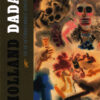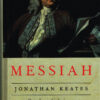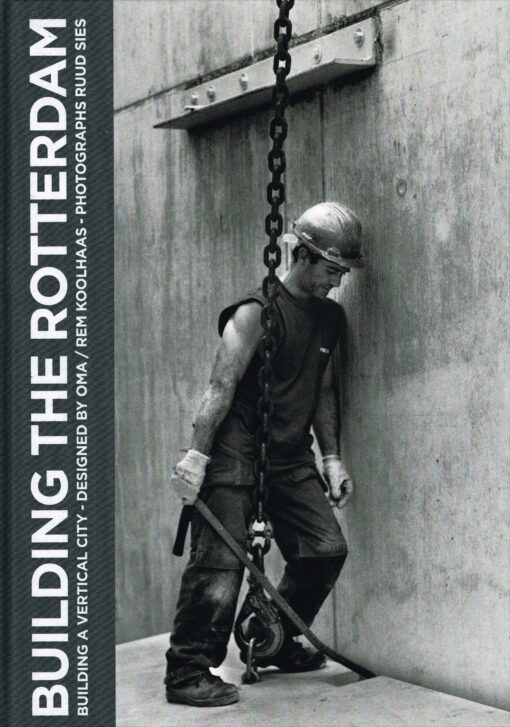Terug/Home/Webwinkel ramsj.nl /Kunst/Fotografie/Building The Rotterdam
Ruud Sies
Building The Rotterdam
€ 49,50 Oorspronkelijke prijs was: € 49,50.€ 19,90Huidige prijs is: € 19,90.
ISBN: 9789462260252.
Bindwijze:
geb
Taal:
NL
Uitgever:
Lecturis
Auteur:
Ruud Sies
Paginas:
224
Categorieën: Fotografie, Kunst.
De Rotterdam is een uniek, multifunctioneel gebouw op de oever van de Maas, aan de Wilhelminapier. Met een oppervlakte van 160.000 m2 is het een nieuw meesterstuk in het rijke oeuvre van architect Rem koolhaas en zijn bureau OMA en een absolute blikvanger in Rotterdam. Door de vele functies kan het met recht een ‘verticale stad’ worden genoemd. Fotograaf Ruud Sies volgde de bouw van De Rotterdam van 2009, toen de eerste schop de grond in ging, tot de oplevering in november 2013. Het gebouw en het bouwproces tonen de creativiteit en inzet van velen, onthullen een visie op leven in steden in de 21ste eeuw en op de vooruitgang in de techniek.
Gerelateerde producten
kunst
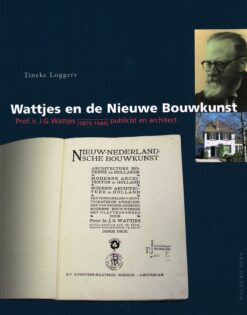
Tineke Loggers
Wattjes en de Nieuwe Bouwkunst
De Waag op de Brink in Deventer is niet zomaar een bouwwerk. Het is de oudste Waag van Nederland. Gebouwd om te imponeren ? in het jaar 1528 ? zou deze laatgotische Waag in andere steden zelfs als stadhuis niet misstaan. De Waag maakte de laatste bloeiperiode van de Deventer jaarmarkten mee. Later kreeg het gebouw naast het wegen van handelswaar ook andere functies. Het diende als hoofdkwartier voor een Spaans garnizoen, de Deventer burgerwacht vond er onderdak, net als het gymnasium. Vanaf 1913 doet de Waag dienst als museum. Zo'n bijzonder gebouw verdient een boek. De Waag wordt als brandpunt van de bloeiende Deventer jaarmarkthandel beschreven, en als belangrijke exponent van de laatgotische bouwstijl. Ook de latere functies komen uitgebreid aan bod. De rijke historie en architectuur worden in een bredere, grensoverschrijdende context belicht. Een uniek boek dat duidelijk maakt hoe bijzonder de Waag in Deventer eigenlijk is. Leven en werk van de Nederlandse architect en publicist J.G. Wattjes. Walburg Perspap - 126 blz
kunst
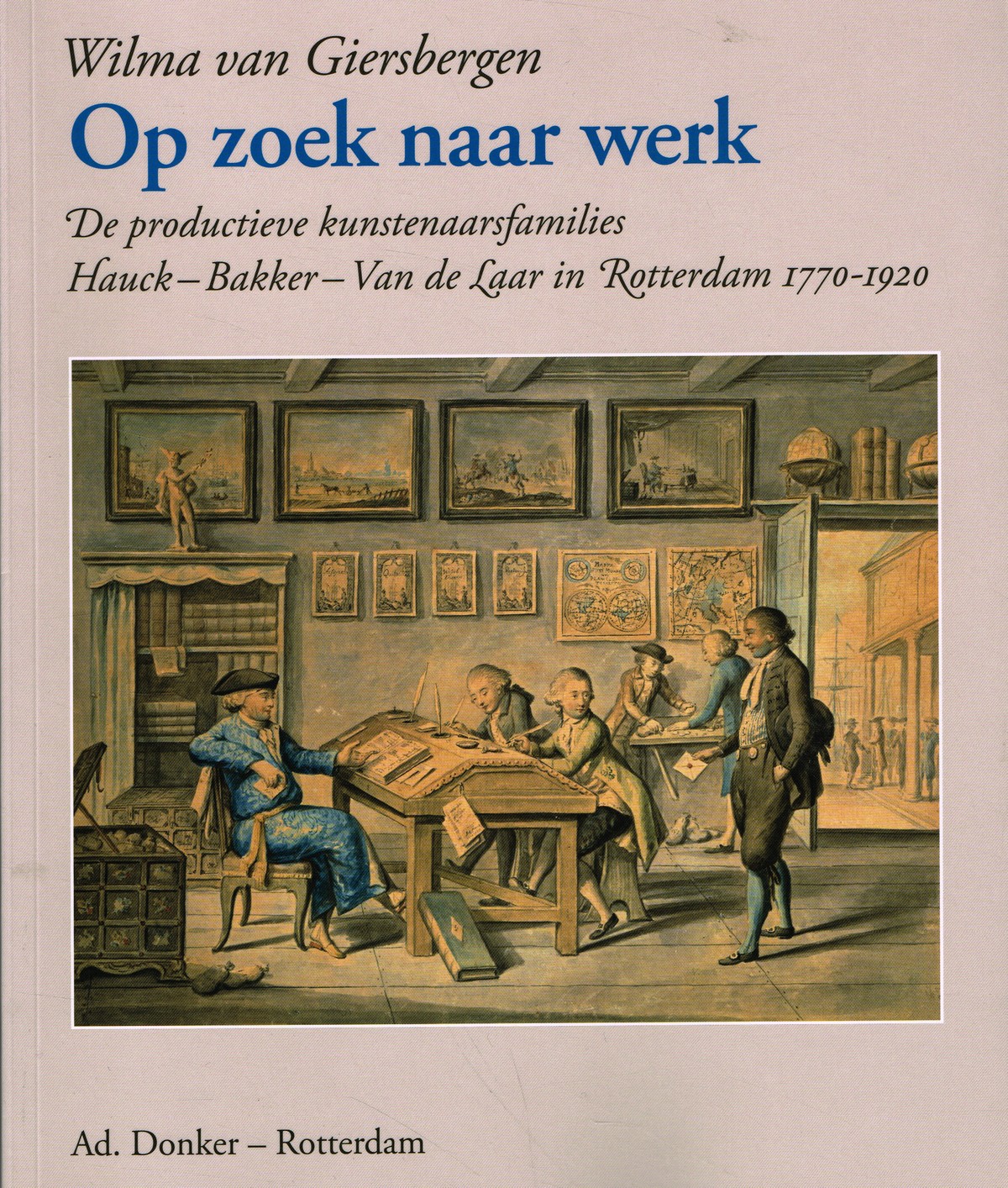
Wilma van Giersbergen
Op zoek naar werk
'Op zoek naar werk, De productieve kunstenaarsfamilies Hauck ? Bakker - Van de Laar in Rotterdam 1770-1920'. Van auteur Wilma van Giersbergen. Begin december 1776 arriveert August Christian Hauck (1742-1801) met zijn vrouw en twee kinderen in Rotterdam. Hij wil er als portretschilder aan de slag, Hauck, die in Mannheim werd geboren, stamt uit een kunstenaarsfamilie. Net zoals zijn vader en zijn (half)broers op zoek moesten naar opdrachten en daarvoor vele reizen zouden ondernemen, zo vindt ook Hauck pas na omzwervingen door de Republiek zijn definiteive bestemming in Rotterdam. August C. Hauck wordt de stamvader van vier generaties Rotterdamse kunstschilders. In 1784 neemt hij een jongeman uit Goedereede, Cornelis Bakker (1771-1849), als leerling bij hem in huis. Cornelis Bakker trouwt in 1795 met Susanna Eva Hauck (1773-1842), het enige kind van zijn leermeester. Twee van hun kinderen, Job Augustus (1796-1876) en Aren Bakker (1806-1843), worden eveneens kunstenaar. Ook raakt de familie Bakker door een huwelijk verwant aan de Rotterdamse kunstenaarsfamilie Van de Laar, van wie de historieschilder Jan Hendrik van de Laar (1807-19874) de bekendste zal worden. Leven van alleen de schilderkunst gaat moeizaam, zodat de kunstenaars generatie op generatie op zoek moeten naar andere bronnen van inkomsten. Honderd jaar lang spelen zij in Rotterdam als tekenleraar een grote rol in het onderwijs bij het tekengenootschap 'Hierdoor tot Hooger' en de Academie van Beeldende Kunsten en Technische Wetenschappen. Daarnaast verdienen verschillenden van hen hun boterham in de decoratie- en interieurschilderkunst. Het is de tragiek van een kunstenaarsfamilie die, opgeleid tot kunstschilder, door velerlei omstandigheden gedwongen wordt haar ambities bij te stellen. In 'Opzoek naar werk' worden zes generaties kunstschilders gevolgd te beginnen met Haucks vader, Johann Jacob Hauck(1694-ca.1769), kerk- en hofschilder in Duitsland. De schilderdynastie eindigt als de decorschilder Frans Bakker (1871-1944) in 1920 Rotterdam verlaat en in Nederlands-Indië gaat wonen. Donkerpap - 368 blz
kunst
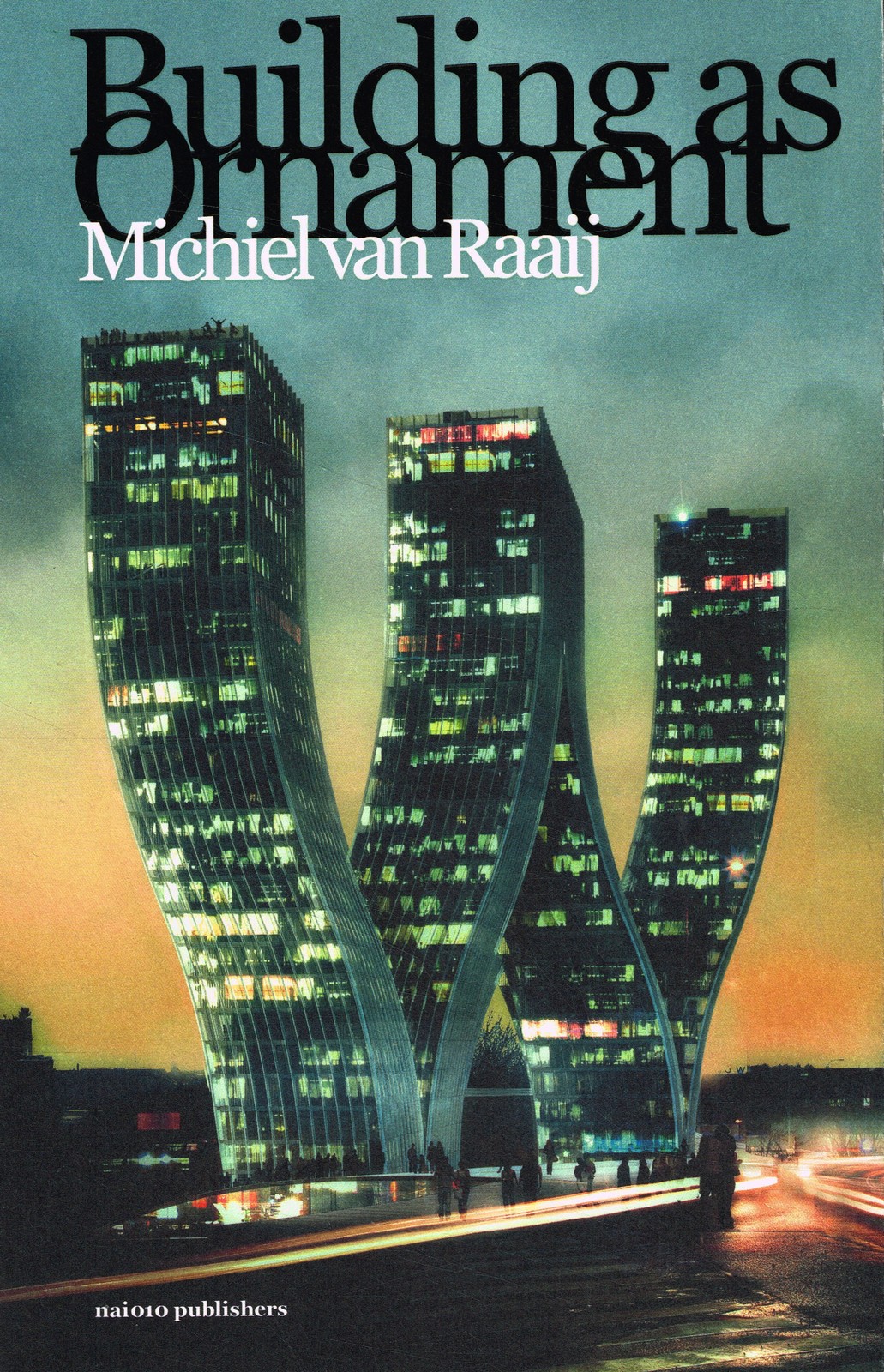
Michiel van Raaij
Building as ornament
For English see below- Het ornament in de architectuur is terug, maar nu op de schaal van het gebouw als geheel. Een letter uit het alfabet, een stapel kiezels of een nationaal embleem - de diversiteit aan vormen die de nieuwe architectuur kan aannemen lijkt onbegrensd. In 'Building as Ornament' onderzoekt Michiel van Raaij door middel van tien interviews hoe deze nieuwe architectuur eind jaren negentig ontstond en hoe ze zich aan het begin van de eenentwintigste eeuw verder ontwikkelde. Een nieuwe generatie architecten ziet het ontwerp van het opgeschaalde ornament als onlosmakelijk onderdeel van hun praktijk. Wat zijn hun drijfveren? Hoe plaatsen zij hun ideeën in de traditie van hun eeuwenoude vak? Michiel van Raaij betoogt dat het ontwerp van het ornament, de iconografie van het gebouw, aan regels is gebonden. Een succesvol ornament vertegenwoordigt een deugd en verduidelijkt de functie, status, constructie, organisatie en de context van het gebouw.- The ornament in the architecture is back, but now on the scale of the building as a whole. A letter from the alphabet, a pile of pebbles or a national emblem - the diversity of forms that the new architecture can take seems limitless. In 'Building as Ornament', Michiel van Raaij uses ten interviews to investigate how this new architecture emerged in the late 1990s and how it developed further at the beginning of the twenty-first century. A new generation of architects sees the design of the scaled-up ornament as an inseparable part of their practice. What are their motivations? How do they place their ideas in the tradition of their age-old profession? Michiel van Raaij argues that the design of the ornament, the iconography of the building, is bound by rules. A successful ornament represents a virtue and clarifies the function, status, construction, organization, and context of the building. Engelstalig boek nai010pap - 241 blz
kunst
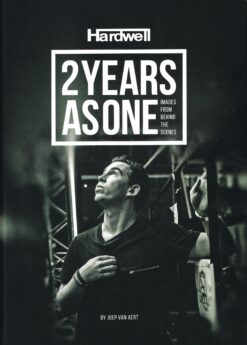
Joep van Aert
Hardwell, 2 Years as One
Ambitie wordt vaak de sleutel tot succes genoemd, maar je komt nergens zonder doorzettingsvermogen. Hardwell heeft dankzij zijn doorzettingsvermogen zijn grootste dromen waargemaakt. Vanaf het moment dat hij benoemd wordt tot de nummer 1 DJ van de wereld in de DJ Mag Top 100 bereikt zijn faam een nieuwe hoogte – een waarmee hij niet meer weg te denken is uit de internationale dansscène. Doormiddel van dit boek krijgen je een blik behind the scenes in het leven van Hardwell. ‘2 Years as One’ bevat nog nooit eerder vertoonde foto's van de belangrijkste momenten uit zijn carrière waaronder Hardwell's tweede verovering van de nummer 1 positie in de DJ Mag Top 100 en de laatste show van zijn I Am Hardwell wereld tour in een uitverkocht Madison Square Garden. Nederlandse fotograaf Joep van Aert heeft Hardwell sinds het winnen van de titel twee jaar lang gevolgd om zijn meest bijzondere momenten vast te leggen. Neem een kijkje in het leven van een van 's werelds grootste dj's en aanschouw exclusieve foto's van de meest indrukwekkende dance shows ter wereld. Het is van Aert gelukt om naast foto's van spectaculaire shows met duizenden fans ook de andere kant van het leven van de Hardwell vast te leggen. Bekijk de nog nooit vertoonde intieme momenten van Hardwell samen met familie en vrienden en het leven buiten de dj-booth van een van de grootste DJ's ter wereld. Reis mee met de ster uit Breda en volg Hardwell en zijn team achter de schermen van zijn grootste shows op Miami Ultra Music Festival, Tomorrowland, EDC Las Vegas, tijdens de populaire Revealed Bus Tour en zijn eigen clubavonden in Hakkasan Las Vegas en Ushuaïa Ibiza. Zie ook het ontstaan en de hoogtepunten van de enorm succesvolle I Am Hardwell Tour. Hardwell drukt zijn stempel op de dance industrie met zijn constante toewijding om nieuwe muziek te maken en grenzen te verleggen met onder andere zijn eigen label Revealed Recordings. In dit officiële fotoboek volg je Hardwell in de misschien wel meest hectische jaren van zijn carrière! "Als je het kunt dromen, kun je het doen!" is het motto van Hardwell tijdens zijn ongeëvenaarde weg naar succes. Dit exclusieve fotoboek laat zien wat kan worden bereikt met hard werken en de wil om je droom te volgen. Komma / d'Jonge Hondgeb - 360 blz
